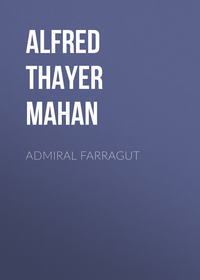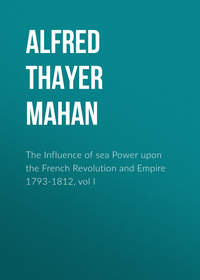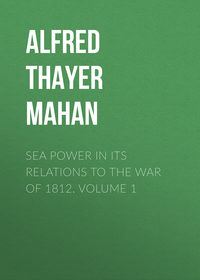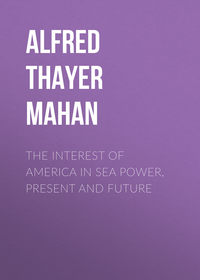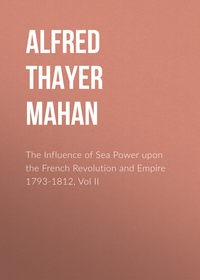 полная версия
полная версияStory of the War in South Africa, 1899-1900
At the same time the enemy was preparing to bombard, and was busily engaged in taking possession, by small bodies of from 100 to 250 men, of the undefended towns and villages in Griqualand West—the thinly peopled district to the west of Kimberley. This pleasant but useless pastime occupied them agreeably, and diverted them from molesting the British at Orange River and De Aar.
"My general plan for the defence of Kimberley," says Kekewich in his report, "was based on the principle of always keeping the enemy on the move, and constantly in fear of an attack from an unexpected quarter. Later, when the advance of the relief column from the Orange River commenced, and I was put in possession of information concerning the probable date of its arrival in Kimberley, I adopted such measures as I hoped would cause the retention of a large force of the enemy in my immediate neighbourhood, and thus enable the relief column to deal with the Boer force in detail. It was with these objects that the numerous sorties and demonstrations in force were made by portions of the garrison of Kimberley."
Such continual offensive action is of the essence of dexterous defence, especially when designed in support of movements elsewhere occurring. It is not surprising, therefore, that Lord Roberts, in forwarding Kekewich's report, comments that "the greatest credit is due him for his able dispositions, for his rapid organisation of an auxiliary force, and for the tact, judgment, and resolution which he displayed throughout the siege." This admirable service was performed at a loss of 38 killed and 133 wounded, of all the troops employed from the beginning of the investment to the day of relief.
Orange River, where Methuen's relief force was assembling, is seventy miles from Kimberley. The country between is part of the great inland plateau, in general contour rolling, but with frequent stony hills, which locally have the name of kopjes, now become so familiar. These kopjes are of varying heights, from fifty to five hundred feet, and consist mainly of large boulders, with, however, a plentiful sprinkling of smaller rocks not too heavy for handling. The steepness and roughness of the surface make climbing a matter of hands as well as of feet, and are therefore a source of particular difficulty and exposure to an assailant; while, on the other hand, the broken heaps of huge stones afford to the defence much natural protection, and can be further improved by building shelter places, which it was the habit of the Boer to do, forming semicircular breastworks. In this way, with natural and artificial cover, was obtained a strong line of defence, depending in extent upon the length and formation of the kopje.
Superficial advantages at once strike the eye and impress the mind, and it was to the kopje therefore that the Boer first looked as the natural feature upon which to found his tactical and strategic scheme of offence. Its command over the plain country, by permitting fire tier above tier, compensated in part for any lack of development due to limited length or other causes, and afforded also several lines of defence to be successively occupied. But the height, while it imposes difficulties upon the attacker, has also drawbacks of its own. A downward, plunging fire demands definite precision and accuracy of aim, and in mark firing error in elevation is more commonly found than swerving to the right or left. The ordinary shot is more apt to fire over a man's head, or strike the ground ahead of him, than to miss him to one side or the other. When, therefore, it had been found by a few experiences—Talana Hill, Elandslaagte, Belmont and Graspan, in all of which the kopje bore a principal part in the scheme of defence—that the British soldier could not be stopped by them alone, the Boers, without abandoning the kopjes, reinforced them where the ground allowed by utilising the beds of the streams, which except in time of flood are nearly waterless. Men looking over the edge of a steep trench glance nearly along the ground in front of them, and if that be clear, unless they are singularly inexpert, their shots sweep along the surface so little above it that they are sure to catch men in front, so far as their height is concerned. This was done at Modder River, two-thirds of the way—forty-five miles—from Orange River, and also at Colenso; while at the disastrous battle of Magersfontein the Boers had strengthened one flank of their line by an artificial trench, which was backed by a kopje.
A peculiarity of the Boer tactical methods should here be described, originating in their habits of life and curiously adapted to the purely defensive scheme upon which they rely. Their aim is to consume the opponent's strength by compelling him to frontal attacks upon well covered men, who at the proper moment shall slip away, leaving the enemy an empty position and the prospect of another similar experience at each succeeding stage. To effect this, their horses were hobbled in the rear of the line, protected by the kopje, if one, or by such other means as offered; it is said even that many of the better to do, coming from a distance, would ride one horse to the place as to a hunting meet, and reserve a better and fresher for the retreat, which, in the earlier stages of Methuen's advance, was probably intended from the first. So far do they push the endeavour to leave a barren result to the victor that they carry away upon their horses, as far as may be and at some risk, not only their wounded but their dead; and of the latter those that cannot be removed are concealed. The singularity of this point of honour, and the tenacity of its observance, seem more congruous to primeval than to modern warfare.
The above description gives a general idea of the conditions confronting Methuen on the 21st of November, when he began his advance. In it he fought four actions: at Belmont, November 23; at Graspan on the 25th; at Modder River on the 28th; and finally at Magersfontein, December 11. These places are distant from Orange River, approximately, 18, 28, and 45 miles; Magersfontein being some three miles beyond the Modder.
The gathering of Methuen's division had not been unwatched by the Boers, and their forces, which, in two principal bodies of about 3,000 each, had been besieging Mafeking and Kimberley, and in other smaller detachments were scattered along the railroad between the two places, began to concentrate. On the 16th of October, 2,000 had occupied the Modder River Station. On the 10th of November a reconnaissance from Orange River had found them occupying the ridges about Belmont, in numbers estimated at 700. At about the same time Kimberley noticed that the besiegers were increasing in numbers, while at Mafeking they were observed to be decreasing. On the 20th it was known that Cronje, whose reputation as a leader stood high, had been detached with his commando from before Mafeking, leaving it to the care of the local Boer troops, and going south. To these and other unrecorded movements of the same kind, all entirely correct in principle, are to be attributed the increasing numbers which Methuen encountered in his successive actions. It is to be remarked here that the Boers knew that inadequate transport material tied the British general to the railroad; and it was the continuance of this belief, when the difficulty had been obviated, that betrayed Cronje to his ruin at a later date.
Leaving Orange River on the early morning of Tuesday, November 21, the army, having rested during the extreme heat of the noons, camped on the evening of the 22nd within five miles of the enemy's position. This was west of Belmont Station, and is described as a line of kopjes extending east and west, and about two hundred feet high. Lord Methuen's purpose in this and other actions was to cross the more dangerous open ground of the approach by dark, arriving at the foot of the kopjes before daylight. His line of advance being, in a general sense, parallel to the hostile front, it had been his intention that the left wing, after securing an eminence called Table Mountain on the enemy's right, should swing its own left around, performing a flanking, or else a general turning movement, pivoting upon the right wing. In the obscurity, however, the latter lost direction and the general found himself in consequence committed to a frontal attack. Orders were therefore sent to the left wing, which had not lost its direction, to conform its movements to those of the right, and the attack was delivered in front. The Boers are estimated to have been 2,000 to 2,500 men, the kopjes affording them three lines of defence in successive ridges.
Although the error in direction had necessitated a change in the method of attack, the time had been exact; the line had started at 3 A.M., reaching the foot of the hills before daybreak. This could scarcely have been much later than 4 A.M., for in the southern hemisphere summer was near. The musketry fire of the Boers opened soon after, "and the troops instinctively moved toward the enemy's position." The advance was covered by artillery, which, however, was slow in its movements, "the horses not having yet recovered from a five weeks' voyage." Criticism has said that the artillery was not sufficiently employed to silence the enemy's riflemen, but Lord Methuen alleges that shrapnel does not kill men in kopjes; "it only frightens them, and I intend to get at my enemy." The inferiority of shrapnel to shell, in use against kopjes, has been asserted by many observers. For these various reasons the battle of Belmont reduced itself to a magnificent charge by a much superior force up a stony and precipitous hill against an enemy strongly intrenched. "At 6.10 the last height was cleared, the enemy in large numbers galloping into the plain, their laager trekking across me 3,000 yards off, my mounted troops unable to carry out their orders on one side—left—because the retreat was covered by kopjes, and on the other—right—because too far; the artillery dead beat and unable to help me. A cavalry brigade and a horse artillery battery from my right would have made good my success." The British loss at Belmont was 53 killed, 275 wounded; that of the Boers is not accurately known.
Two days later at Graspan the Boers were in about the same force and the natural conditions similar in general character. The Boer line extended east and west, and at the latter end—their right—were "two high hills." These were bombarded with shrapnel, the effect of which was more thoroughly tested, one battery alone firing 500 rounds to clear the summit, before the infantry were allowed to advance. The men again fought their way to the top, but again the enemy got away. "The heights gained, I found I had taken the whole Boer force in flank, and had entirely cut them off from their line of retreat. My guns played on the masses of horsemen, but my few cavalry, dead beat, were powerless, and for the second time I longed for a cavalry brigade and horse artillery battery to let me reap the fruits of a hard-fought action." "The loss in both these actions," Methuen says, "was great, and convinces me that if an enemy has his heart in the right place he ought to hold his own against vastly superior forces, and it does our men great credit that nothing stops them."
Both actions, in short, illustrate the same lessons, the Boers' particular advantages for defence, their readiness in retreat, and, it must be added, the prompt facility with which they resorted to it. When the most that can be said has been said for their methods—and much can be said—it still remains that an eye ever to the rear, upon escape, is militarily a demoralising attitude upon which no sound system of warfare can be built up. The nervousness of the Boers at any seeming threat to their line of retreat has been so obvious as to elicit frequent comment. As a predominant motive it is ruinous.
The loss of the British at Graspan was 16 killed, 169 wounded. Lord Methuen noted in his report that he had fought distinctly different Boers on the two occasions. If he was not mistaken, this helps to account for the greatly increased numbers encountered three days later at Modder River. At Kimberley also it had been observed that the number of the besiegers was now much diminished, and a report, substantially correct, was received there that Cronje was marching south with 3,000 men. These, with the two bodies already fought, would bring the Boer force up to the 8,000 estimated by Methuen to be present at the next action, of November 28. The Kimberley garrison did not fail to occupy the attention of their besiegers by frequent sorties, one in considerable strength occurring on the day of the Modder River fight; but such measures, however commendable, cannot beyond a certain point impose upon a sagacious commander with good information, and Cronje well knew that to stop Methuen was his principal affair.
The British force rested two days after Graspan, and at 4 A.M. of November 28 resumed its northward march. Methuen's information had led him to believe that the Modder was not held in force, and that he would meet his next serious opposition at Spytfontein, where the Boers would make their last stand; the country between it and Kimberley, a dozen miles further on, being open and unfavourable to their defensive tactics. Reckoning upon this, he first intended, taking five days' rations, to make a circuit eastward by way of Jacobsdaal, crossing the Modder higher up, and coming in upon Spytfontein from that direction. The railroad, protected by earthworks, was to be left under guard of one or two thousand men. On the very eve of starting, intelligence came in that Modder River Station was strongly occupied, and the general, fearing under that condition to risk the railroad, decided to advance direct upon the river. He was still ignorant, and even unsuspicious, that the enemy had massed to the number of 8,000 to oppose the passage of the 7,000 to which casualties and the care of lengthening communications had reduced his own division.
The position taken by the Boers was on the south bank of the Modder, at the point where it is joined by the Riet. The two streams, flowing respectively from east and south-east, inclose an angle of forty-five degrees, the ground between them being called an island, though not so properly. The railroad crosses by a bridge—by this time destroyed—just below the junction; Modder River Station, a small, pleasant village, being on the north bank. In the approach from the south, by which the British were advancing, the land—or veldt—slopes evenly and regularly downward to the river, rising again beyond in such wise that the island is higher than the southern bank, but is in turn commanded by the northern.
Cronje had intrenched his riflemen along a line of three miles of the river bed, by which they were entirely concealed. On the island, which is covered with trees and brush, he had placed sharpshooters and quick-firing guns. On the extreme Boer right their position was further strengthened by broken, rocky ground and small kopjes, considerably in advance of their line. This forward cover they held by a strong detachment, as they did also another slight eminence, six hundred yards further east, upon which was a farm-house and kraal. From these a cross-fire upon the enemy served to protect their right flank, which by position otherwise was the weaker.
Although unconscious that he was about to encounter numbers equal to, if not greater than his own, Methuen, who expected them to retire after a show of opposition, considered it still his best course to advance with his two brigades on an extended front, the Guards on the right, the 9th Brigade on the left, the two carefully keeping touch from end to end and crossing in that order. Thus approaching, at 8.10 A.M. a very heavy fire showed that the river was held in force and caused numerous casualties, many men falling at once. "The Scots Guard Maxim detachment were completely wiped out." On the British right—Boer left—there was no break in the even slope of the ground, the Guards were visible for three miles from the river, and fully exposed alike to the fire of the trenches and that from the island; but the latter, without solid cover, was in turn closely searched by the British batteries, which, massed principally upon the right of their line, threw in the action over three thousand rounds. Under such heavy fire the Guards were directed to extend to the right, at the same time swinging round their extreme right companies toward the left. It was hoped thus to outflank and enfilade the hostile line; but the movement was checked by the Riet, which, contrary to the intelligence received, was not fordable. Colonel Codrington with a score of officers and men did get across; but the water was too deep for support to follow, and in returning some of the party were nearly drowned, having to hold hands to stem the force of the current. There was nothing for the right wing but to lie down when they had got within 1,100 yards of the enemy, and then patiently to await an outcome. Accordingly they thus remained from 10 A.M. until the sun went down at 6.20; the fire never ceasing, yet for all its intensity causing few casualties while the men lay quiet. "No one," wrote Methuen, in his report, "could get on a horse with any safety within 2,000 yards of the enemy." Under these conditions the conveyance of orders to different parts of the line was much embarrassed.
The left of the British front extended some distance west of the railroad. Here a rising ground, parallel to the river course, concealed the troops in their advance until its summit was reached, but there the same withering fire checked them. About 2 in the afternoon, however, two companies of light infantry succeeded by a rush in carrying the farm-house in front of the Boer lines, and almost at the same moment another detachment dislodged the enemy from the advanced kopjes on his extreme right. The parties thus established so threatened the Boers' flank as to shake their position.
An attempt was next made to gain and pass the river by a ford, which lies behind the farm-house, but this was too near the strength of the hostile fire and the effort was repelled. On their furthest left the British had better success. There the advanced kopjes supported the movement, and there the enemy's fire was weakest. A place deep but passable was found, and the Boers' right flank was turned under a heavy fire of infantry supported by a battery. First a party of twenty crossed, under Colonel Barter, of the Yorkshire Light Infantry—the names of all the men who do such a deed should be remembered, but their leader at least may be mentioned. Three or four hundred followed, and fixed themselves on the north bank, winning the outskirts of the village. Thence an advance of three-quarters of a mile up the river-side was made, the general of the brigade having now crossed; but this ground could not be held, and the British were forced back. Reinforcements were sent, and in performing this service Methuen's chief-of-staff, Colonel Northcott, was killed, the battle raging along the front in full severity. When the fire ceased at dark, the Boers still occupied their trenches, but the British were firmly settled upon their right flank and rear, on the north bank, and had possession of a practicable ford. During the night the Boers evacuated their positions, and the field of battle remained with the British, who continued to hold the line of the river up to the time that Roberts began his advance.
The battle of the Modder showed that, with the modern improvements in rapid-firing arms, it is possible for troops well entrenched over an extended front to sweep a plain field of approach with such a volume of fire as is impossible to cross. This it shows, but otherwise the lessons to be derived have been greatly exaggerated. Witnesses exhaust their descriptive powers to portray the evidences of the innumerable falls of bullets, shown by the kicking up of the dust. "A fire so thick and fearful that no man can imagine how any one passed under or through it. Many crippled lay flat for hours, not daring to rise for succour. If any one asked a comrade for a drink of water, he saw the bottle, or the hand passing it, pierced by a Dum-Dum or a one-pounder shell. If he raised his head to writhe in his pain, he felt his helmet shot away."13
The impression produced by the scene is most forcibly betrayed by the exaggerated phrase of the veteran commander in his first telegram—"One of the hardest and most trying fights in the annals of the British Army." Yet, as far as result was concerned, it was an immense expenditure of ammunition and little loss of life. The frontal attack was so clearly impossible that it was at once abandoned, and the men lay down. A generation or two ago they would have persisted, many more would have been killed, and while the position might at last have been carried in front, more than likely it would at the last have been turned, as it was at the Modder. The British loss, 70 killed, 413 wounded, was but 7 per cent. of the troops engaged—about 7,000—far below that of many of Wellington's battles.
In point of tactics, the battle may be summarized by saying that the British line held the enemy in front until a couple of detachments, by daring rushes, had established themselves in positions of command on the western flank, whence they worked themselves round, crossed the river, and fairly turned the hostile flank. And that, so stated, is a very old story. On the other hand, at Belmont and Graspan, at Talana Hill and Elandslaagte, it was shown that the same arms of rapid fire do not necessarily control where precision and skill, not mere torrential volume, are needed. Not only is it not demonstrated that modern weapons can stop the uphill advance of a resolute infantry on broken ground; it has been shown to probability that they are incapable of so doing. Whether such charges are wise is one thing, but whether they are possible is another. Rapidity of fire has reversed conditions where rapidity is the essential factor; it has not reversed them, probably not greatly modified them, where skill and resolution are chiefly demanded.
After the Modder fight Lord Methuen remained at the position then won, establishing a pontoon bridge, restoring that of the railroad, and awaiting reinforcements to replace the men lost in battle and those necessarily detached to protect his lengthening line of communications. After three severe actions he had now traversed forty-five of the seventy miles that lay between the Orange River and Kimberley; but the inadequacy of his numbers was increasingly felt. During the ten or twelve days at the Modder a serious demonstration was made in his rear at Enslin, threatening the railroad and his communications. Although successfully repelled, it was evident that the enemy's concentration had made them so far superior as not only to increase greatly his task in front, but also to threaten his rear. "The longer I remained inactive," said he, in his report, "the stronger would the enemy become. Therefore, on the day my last reinforcement arrived, I decided to continue my advance. It was out of the question to follow the railway, owing to the large kopjes on either side, which had been strongly entrenched. Besides, by that route there was not sufficient water."
The railroad, after crossing the Modder, runs on the west side of the river nearly due north for two miles, and then turns north-west for two more, when it passes between two kopjes, both fortified. The right-hand one of these, the Magersfontein, extends to the south-east for three miles, rising there to an abrupt peak about 150 feet high, which is the key of the situation. In the prolongation of this range a low ridge covered with brush extends eastward to the Modder, the bed of which thereabout follows for some distance a north-east and south-west line. At the foot of the peak, but some little distance in advance, the Boers had dug a line of trenches, which not only covered the immediate front, but at the eastern end of Magersfontein sweep round the curve of the hill to the north for some hundred yards, and then turned east again, following the bushy ridge to the river. These dispositions facilitated the passage of troops from one flank to the other under cover, and preserved control of a ford over the Modder behind the line. The trenches, especially before the peak, were filled with riflemen. The kopje itself was also manned, but it is allowable to believe that the experience of the war, already illustrated by many encounters, must have persuaded so shrewd a fighter as Cronje of the superior advantage of the trench system. Before the trenches ran a continuous line of barbed-wire fence. A probable estimate of the opposing forces places the Boers at 15,000, the British at 11,000. No certainty can as yet be predicated for the Boer numbers, which depend upon the enemy's calculations, but that they were decisively superior is scarcely doubtful.





